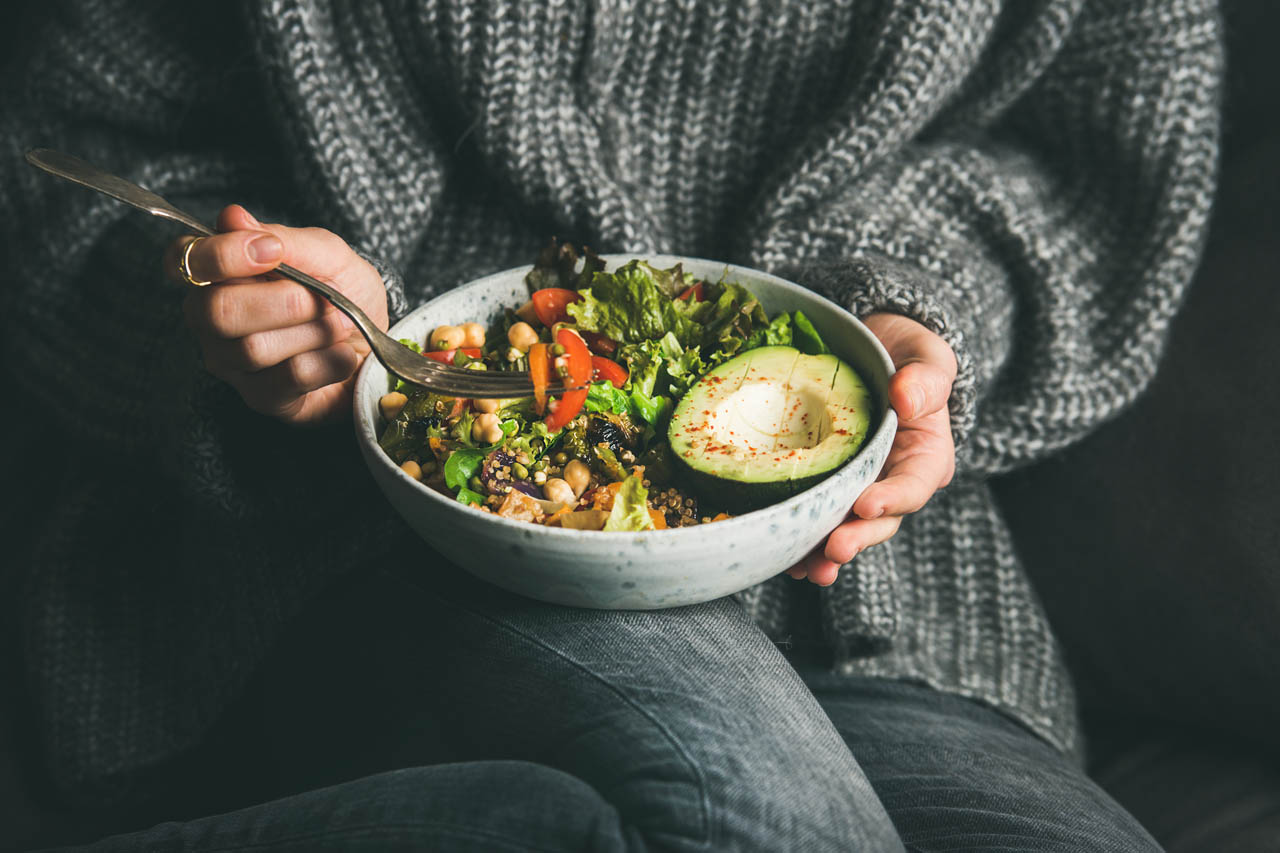
For years, menstrual cycles were an extremely taboo topic; this left most menstruators fairly disconnected from their periods and their bodies. Periods were seen as a messy, embarrassing, inconvenience that arrived monthly or as a painful reminder about one’s fertility status. People who have periods would slink off to the bathroom discreetly stuffing tampons and pads up their sleeves or in their purses or pockets ensuring they were undetectable to any onlooker.
Now, many menstruators view their cycle through an empowered lens. The popularity of newly designed menstrual cups, period underwear and cycle tracking apps are a signifier of that shift. We also see this with our newfound understanding that eating, moving and resting in rhythm with the phases of our cycle helps harness creativity, energy, productivity and helps relieve painful PMS symptoms.
Related: 10 Healthy Foods to Eat to Naturally Boost Ovulation
How menstrual cycles work
On average, a menstruation cycle is about 28 days but the range is really between 21-35 days. Did you know, we call menstrual bleeds “periods” because they happen “periodically” in the month – cool, right? There are four phases to the menstrual cycle:
- Follicular phase
- Ovulatory phase
- Luteal phase
- Menstruation phase (where the bleed happens)
What we eat through each phase of the cycle helps replenish the body with nutrients, detoxify hormones, support blood sugar and in turn can help energize the body and relieve PMS symptoms.
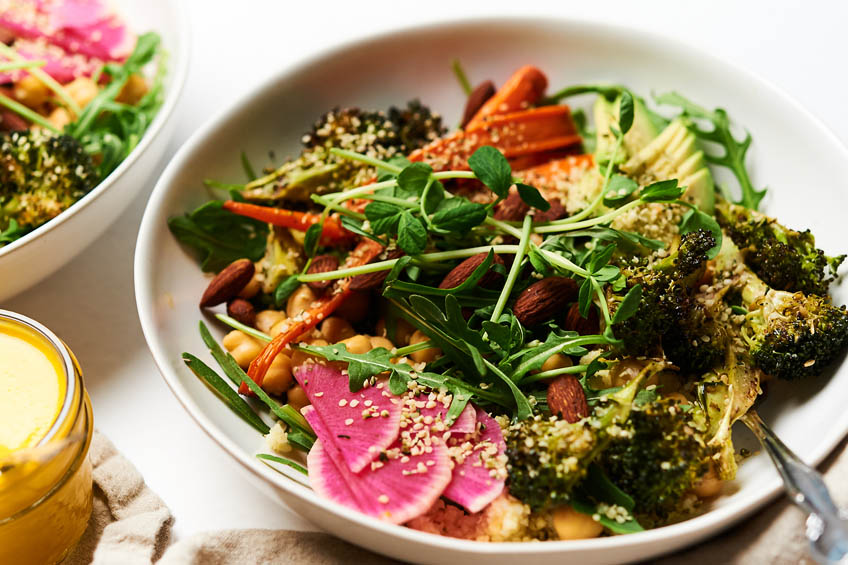
Get the recipe: The Ultimate Salad to Eat After Your Period
The Follicular Phase
The first phase is called the “follicular phase” because it’s when your follicles (the sacs that contain an egg) are getting ready for ovulation. It’s the 7-10 days after your period ends and before ovulation starts. This may seem like it’s smack in the middle of your whole cycle, but it’s actually considered the first phase. Estrogen starts out low at the beginning, then surges toward the end to prepare the body for ovulation. Higher levels of estrogen means a happier mood, a healthier sex drive, more energy and a higher tolerance for carbs (woohoo!). The body becomes more “insulin sensitive” meaning it uses carbs more efficiently, so bring on the potatoes, yams, squash and rice. You may need these carbs to support your higher energy levels during this phase. Now is a time to increase iron-rich foods like lentils, beef, shrimp, tempeh, tofu and spinach. If you opt for vegetarian sources of iron, add some vitamin C like bell peppers, citrus or broccoli to increase absorption.
The best recipes to try during your follicular phase:
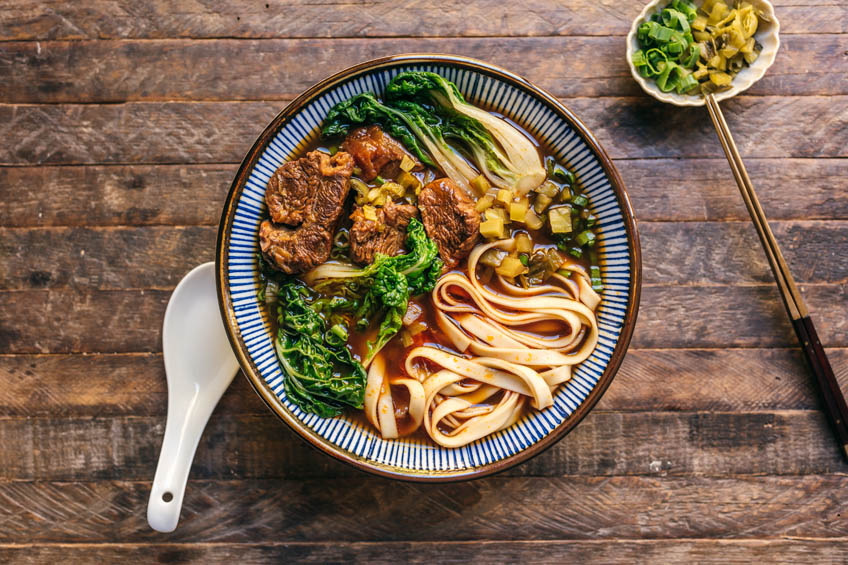
Get the recipe: Taiwanese Beef Noodle Soup
The Ovulatory Phase
Welcome to your most fertile time: ovulation. Ovulation is marked when the egg is released from your ovary, usually around day 14 of your cycle. Some people experience ovulation pain, others don’t. Ovulation is only a one day event and happens right after the follicular phase. This is when estrogen and testosterone are at their peak, before they decline. This tends to mean higher energy levels and an increased need for cruciferous veggies (think: broccoli, kale, cabbage, cauliflower) and fiber to metabolize and excrete (i.e. poop and pee out) estrogen from the body.
The best recipes to try during your ovulatory phase:
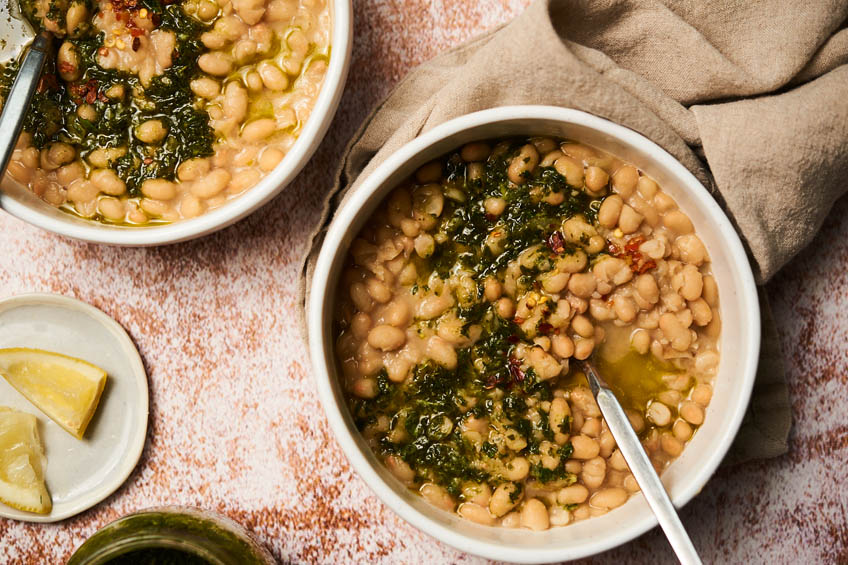
Get the recipe: Brothy, Herbaceous White Beans
The Luteal Phase
Cramps, cravings, bloating and moodiness tend to occupy the latter half of this phase of the menstrual cycle, aka PMS. The luteal phase begins after ovulation and ends when your period starts, this lasts about 10-14 days. Your calming hormone, progesterone, spikes and then sharply drops off right before menstruation; estrogen also bumps up and rises then descends before the bleed. These hormonal shifts, as well as a drop in serotonin (your happy chemical), are the reasons behind the intense sugar cravings, salt cravings, emotional rollercoasters, crying spells, constipation, bloating and increased appetite. To tamper some of these symptoms, eat foods rich in omega 3s, vitamin b6, zinc and magnesium, like salmon, eggs, sweet potatoes, spinach, pumpkin seeds and raw cacao. During this phase the body is also more “insulin resistant”, meaning it doesn’t process carbs as efficiently (even though the cravings for them can be intense). To keep insulin in check and blood sugar balanced, eat a good amount of protein, like chicken, eggs and lentils, healthy fats like avocado, walnuts, salmon and olives and fiber, like chia seeds, squash, raspberries and chickpeas. During this time, your body requires more calories so don’t ignore those hunger pangs when they start to creep up.
The best recipes to try during your luteal phase:
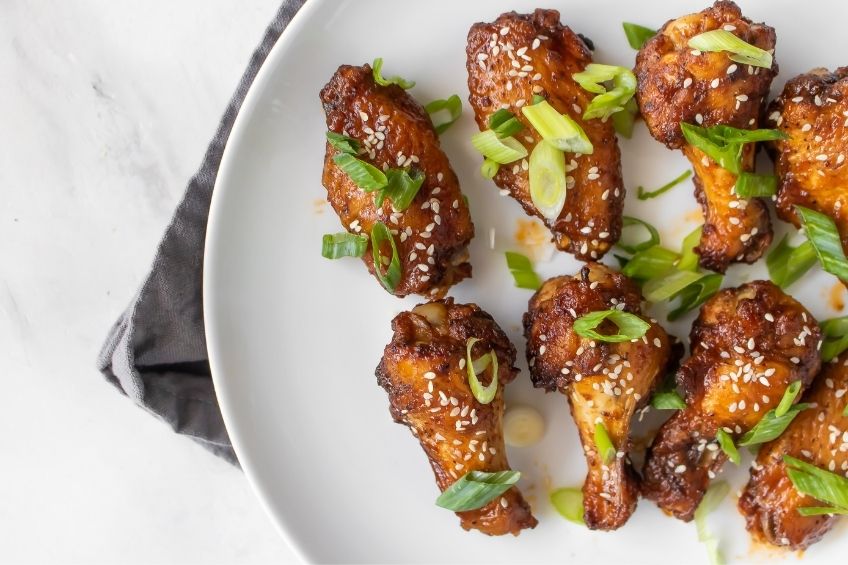
Get the recipe: Air Fryer Sweet Chili Chicken Wings
The Menstrual Phase
The menstrual phase, i.e. the bleed, marks the end and beginning of the cycle and lasts 2-7 days. Your hormones are at their lowest and the first few days are often characterized by leftover PMS symptoms, like water retention, bloating, cramping, acne and irritability; but this tends to wane after day two or three. During this time you want to focus on iron-rich foods like beef, lamb, kidney beans and dark leafy greens. You also want to load up on comfort foods, but not the kind that will give you tummy aches or make you feel worse after. Instead, try warming stews, soups, curries and casseroles made with root veggies, legumes, beans and good protein.
The best recipes to try during your menstrual phase:
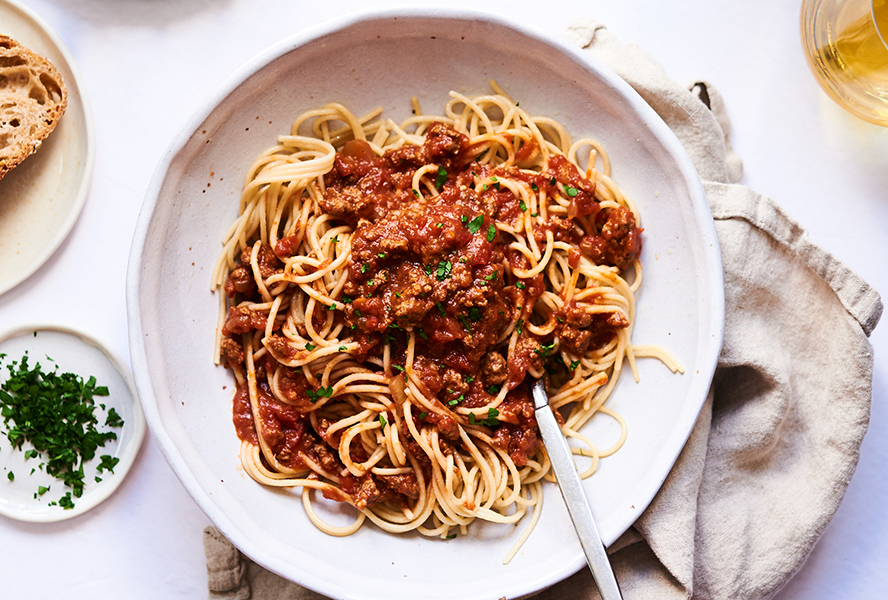
Get the recipe: Slow Cooker Bolognese
